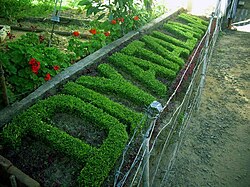Diyatalawa
| Diyatalawa | |
|---|---|
 |
|
| Coordinates: 6°48′00″N 80°58′01″E / 6.80000°N 80.96694°ECoordinates: 6°48′00″N 80°58′01″E / 6.80000°N 80.96694°E | |
| Province | Uva Province |
| Time zone | Sri Lanka Standard Time Zone (UTC+5:30) |
| • Summer (DST) | Summer time (UTC+6) |
Diyatalawa (දියතලාව) is a garrison town in the central highlands of Sri Lanka, in the Badulla District of Uva Province. It is at an altitude of 1,499 m (4,918 ft) and has become a popular destination for local holiday makers. It is home to the Diyatalawa Garrison of the Sri Lanka Army, which includes the Sri Lanka Military Academy, officer training center of the army; SLAF Diyatalawa, the Sri Lanka Air Force's ground combat training centre; and facilities of the Sri Lanka Police.
It is not known when Diyatalawa became a training station for troops, but available records show that it was selected around 1885, when the British Army first established a garrison at Diyatalawa. At that time training was conducted at the Imperial Camp which is now occupied by the Gemunu Watch troops. In 1900, the British War Office constructed a concentration camp in Diyatalawa to house Boer prisoners captured in the Second Boer War. Constructed to house 2500 prisoners and 1000 guards and staff, the number of prisoners increased to 5000. During World War I an internment camp for enemy aliens was set up.
Early in World War II the camp was reopened and German nationals resident in Hong Kong and Singapore, as well as many sailors, like those removed from the Asama Maru in violation of international law, were housed here. Also imprisoned were Buddhist monks of German extraction like Nyanaponika and Govinda Anagarika who had acquired British citizenship. In June 1941 most of the sailors were transferred to Canada. The section for Germans was sensibly divided in a pro- and anti-Nazi wing. There was also a section set up to house Italian POWs. After the Japanese started bombing the island, inmates were on 23 February 1942 transferred to camps in India. Males usually went to Dehradun. Officer training was also carried out here during the war.
...
Wikipedia

